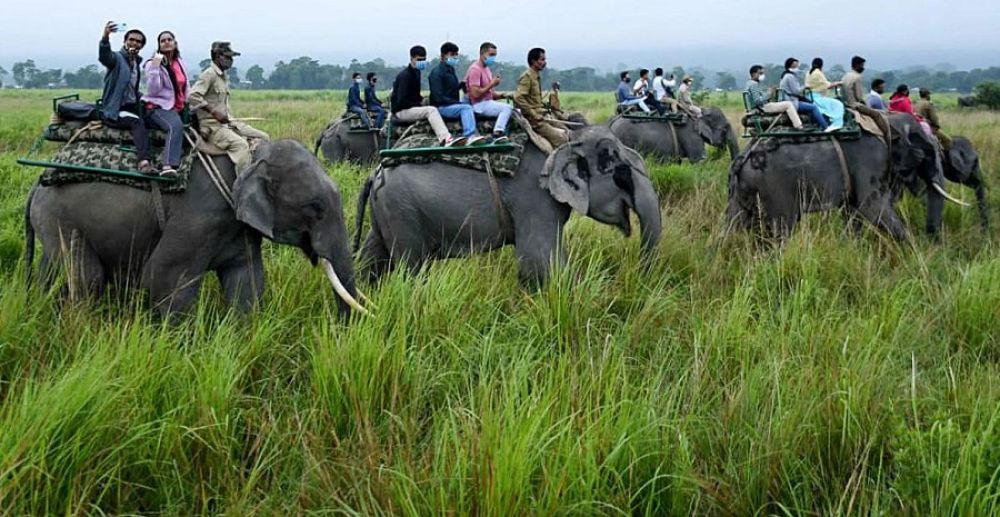

Kaziranga National Park, located in the Northeastern state of Assam in India, is one of the most distinguished wildlife destinations in the world. Renowned for its vibrant, biodiverse ecosystem and the large population of Indian one-horned rhinoceroses, Kaziranga was declared a national park in the year 1974. The park spreads across an area of approximately 430 square kilometers, enhancing its ecological significance and making it a UNESCO World Heritage Site.
Tourism in Kaziranga started gaining momentum in the early 20th century after it received due recognition by the Government of India and international organizations for its one-of-a-kind natural habitat. The first formal tours were initiated by the government and various private stakeholders, emphasizing safaris as the central tourism attraction. Over time, visiting Kaziranga became synonymous with the experience of an elephant safari, regarded as one of the most intimate ways of observing wildlife.
The park's framework for tourism was designed to align with conservation efforts, ensuring that the influx of tourists did not affect the park's ecological balance. In 1985, Kaziranga was declared a World Heritage Site by UNESCO, which further propelled its status as a must-visit destination for wildlife enthusiasts around the globe.
Elephant safaris became popular as they offer a vantage point that vehicles cannot provide, allowing visitors to traverse through the tall elephant grass and get close to the wild inhabitants, especially the majestic rhinos. In the misty mornings of Kaziranga, seated atop these gentle giants, tourists can enjoy an unobstructed view of the park and witness various wildlife species in their natural habitat.
In recent years, Kaziranga has seen a shift towards more eco-friendly and sustainable tourism practices. The number of visitors is monitored and regulated to minimize the impact on the environment. Moreover, advanced booking systems, better accommodation facilities, and the involvement of local communities have enhanced the tourist experience while contributing to socioeconomic development.
The integration of digital technology in tourism management has also made information more accessible to tourists. Travelers can now learn about the park, book their safaris online, and choose from a variety of experiences including jeep safaris, bird watching tours, and river cruises, alongside the traditional elephant safari.
The success of Kaziranga as a tourist destination is largely due to the rigorous conservation efforts that have helped protect its wildlife. The increase in the rhino population has been a major draw for tourists. However, to ensure that tourism does not interfere with conservation goals, the authorities have implemented strict guidelines for both jeep and elephant safaris, maintaining a balance between wildlife protection and an enriching experience for visitors.
As one of the cornerstones of wildlife tourism in India, Kaziranga National Park and its elephant safaris continue to fascinate visitors from across the world, promoting a deeper understanding of nature and the imperative need for conservation.